Lavender
PAGE 1 2 3 4 ALL aka English Lavender Lavandula. Named after one of England's finest gardens this lovely little English Lavender has intensely aromatic foliage and flowers. The deep purple flowers appear on fine stems in summer. Happiest in a sunny well drained position. Trim after flowering. Evergreen. RHS AGM.
Lavender Hidcote Blue Expected Stock Height: 25/30 cm ? We are awaiting confirmation from our supplier for an expected delivery date. Express your interest by adding to your Waitlist. Lavender Hidcote Blue Expected Stock Height: 20/25 cm ? Currently sold out. Add to your waitlist to be advised when next in stock. Lavender Hidcote Blue Expected Stock Height: 10/15 cm ? New stock expected Beginning of September, 2025. Waitlist now. Estimated price TBA. Payment on order.
aka Spanish Lavender This lavender is bit different with lots of frilly wings nestled in the dark purple flower bracts all the way down the bloom. A compact bush, highly fragrant, drought tolerant and attracts bees. Blooms with beautiful mauve wings are stunning in the garden whether planted singly or en-masse. Perennial Lavender Lavish Blue Expected Stock Height: 10/15 cm ? New stock expected Middle of September, 2025. Waitlist now. Estimated price $29.99. Payment on order.
aka Spanish Lavender This lavender is bit different with lots of frilly wings nestled in the dark purple flower bracts all the way down the bloom. A compact bush, highly fragrant, drought tolerant and attracts bees. Blooms with beautiful mauve wings are stunning in the garden whether planted singly or in bulk. Perennial Lavender Lavish Purple Expected Stock Height: 10/15 cm ? New stock expected Middle of September, 2025. Waitlist now. Estimated price $29.99. Payment on order.
aka Spanish Lavender A Lavender with a difference, with lots of frilly wings nestled into the flower bracts all the way down the bract. A compact bush, highly fragrant, drought tolerant and attracts the bees. With its beautiful pink flowers they are stunning in the garden whether a specimen or landscaped in bulk. Perennial Lavender Lavish Rose Expected Stock Height: 5/10 cm ? New stock expected Middle of September, 2025. Waitlist now. Estimated price $29.99. Payment on order.
aka Spanish Lavender Lavandula. A unique Spanish variety of Lavender found growing in NZ. The light green-grey foliage has an aromatic Lemon scent, this is topped off with large yellow-green flower heads that appear in spring. Loves a hot sunny well drained position. Trim after flowering. Evergreen. PVR.
Lavender Lemon Leigh Expected Stock Height: 15/25 cm ? Currently sold out. Add to your waitlist to be advised when next in stock. aka Spanish lavender Lavandula. Laveana are a new range of ultra compact bushy Lavender which are earlier to flower than most other Lavender. Laveana Violet Blue features chunky deep purple blooms on short stems with Blue wings which smother the attractive greyish green foliage from spring throughout summer. Evergreen. Lavender Leveana Violet Blue Expected Stock Height: 15/25 cm ? Currently sold out. Add to your waitlist to be advised when next in stock. aka Spanish Lavender Love heart is a compact Spanish lavender with early, highly fragrant flower spikes. Flower heads are wine red with pink wings above. The bush is highly branched, attractive and aromatic grey green foliage. Can be grown in containers or well-drained flower beds. Protect from heavy frosts. Perennial Lavender Love Heart Expected Stock Height: 10/15 cm ? New stock expected Middle of September, 2025. Waitlist now. Estimated price $29.99. Payment on order.
aka English Lavender Lavandula. English Lavender. A dwarf, compact form with foliage and flowers that carry the true sweet lavender fragrance we all love. The fine, grey foliage is topped off with stalks of small flower heads in the peak of summer. Trim after flowering. Loves the sun and good drainage. Evergreen. Lavender Munstead Expected Stock Height: 15/20 cm ? Currently sold out. Add to your waitlist to be advised when next in stock. aka English Lavender Lavandula. English Lavender. This selected form of the ever popular and very fragrant English Lavender will delight the senses with stems of intense blue-mauve flowers in the summer months. Aromatic fine grey foliage. Plant in a sunny well drained spot and trim after flowering. Evergreen. Lavender Pacific Blue Expected Stock Height: 10/15 cm ? We are awaiting confirmation from our supplier for an expected delivery date. Express your interest by adding to your Waitlist. Lavender Pacific Blue Expected Stock Height: 15/25 cm ? Currently sold out. Add to your waitlist to be advised when next in stock. aka Spanish Lavender Lavandula. Bred in Nelson this striking Lavender has an interesting colour combination of deep purple and soft lemon. The grey-green foliage is aromatic and in spring-summer the purple flower heads appear topped off with large 'wings' of pale lemon yellow. Loves the sun and good drainage. Evergreen. Lavender Pat Leigh Expected Stock Height: 15/25 cm ? Currently sold out. Add to your waitlist to be advised when next in stock.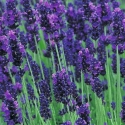
Habit: Compact
Leaves: Evergreen, Light
Mature Size (HxW): 60cm x 60cm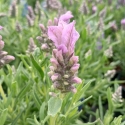
Lightly trim after flowering and fertilize to promote continuous flowering.
Habit: Compact
Leaves: Evergreen, Green
Mature Size (HxW): 80cm x 70cm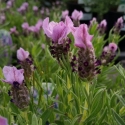
Lightly trim after flowering and fertilize to promote continuous flowering.
Habit: Compact
Leaves: Evergreen, Green
Mature Size (HxW): 80cm x 70cm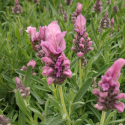
Lightly trim after flowering and fertilize to promote continuous flowering.
Habit: Compact
Leaves: Evergreen, Green
Mature Size (HxW): 80cm x 70cm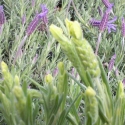
PVR:
Habit: Upright
Leaves: Evergreen, Green
Mature Size (HxW): 1m x 0.6m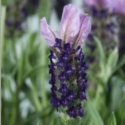
Very well branched bushy habit. Prefers full sun.
Habit: Compact
Leaves: Evergreen, Green
Mature Size (HxW): 100cm x 100cm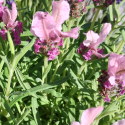
Prune lightly after flowering to maintain shape.
Habit: Compact
Leaves: Evergreen, Green
Mature Size (HxW): 75cm x 75cm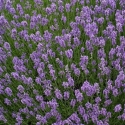
'Munstead' is named after Munstead Woods in Surrey - the home of renowned garden designer - the late Gertrude Jeckyl.
Habit: Compact
Leaves: Evergreen, Grey Green
Mature Size (HxW): 30cm x 30cm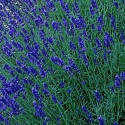
Habit: Compact
Leaves: Evergreen, Light
Mature Size (HxW): 60cm x 45cm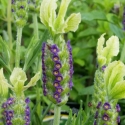
Lightly trim after flowering and side dress with a little lime annually for best results.
PVR:
Habit: Upright
Leaves: Evergreen, Green
Mature Size (HxW): 70cm x 70cm
HL Nurseries Limited t/a Wairere Nursery
826 Gordonton Road, R D 1, Hamilton 3281 Ph: (07) 824 3430 Email: